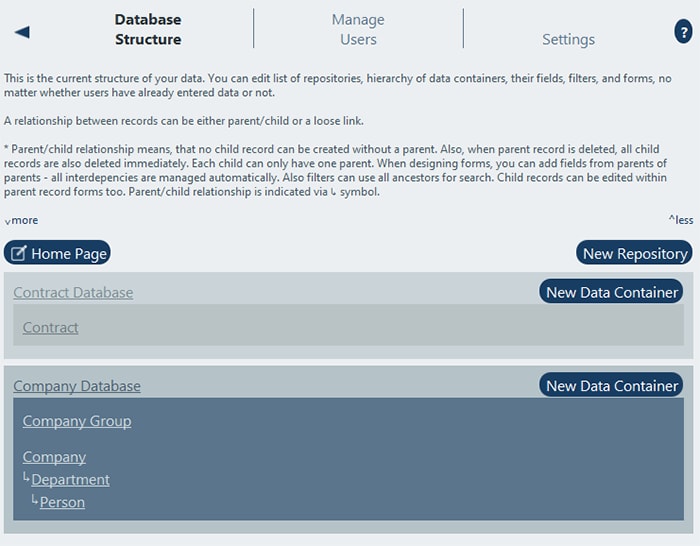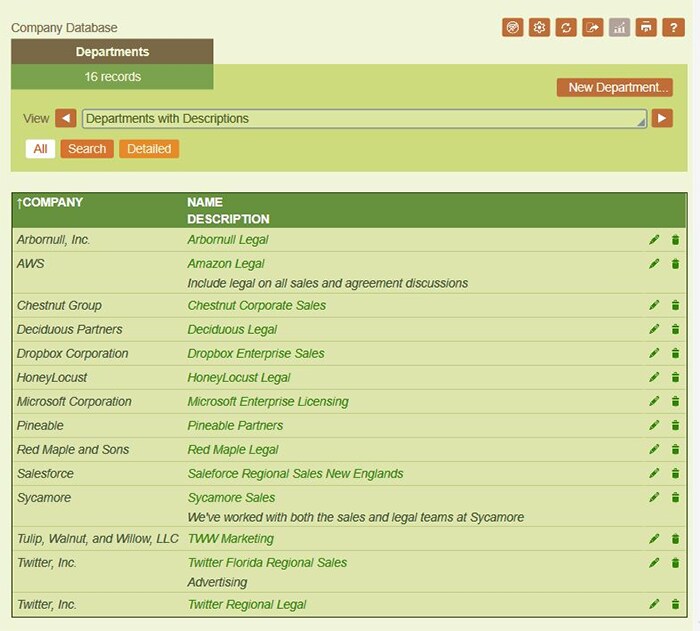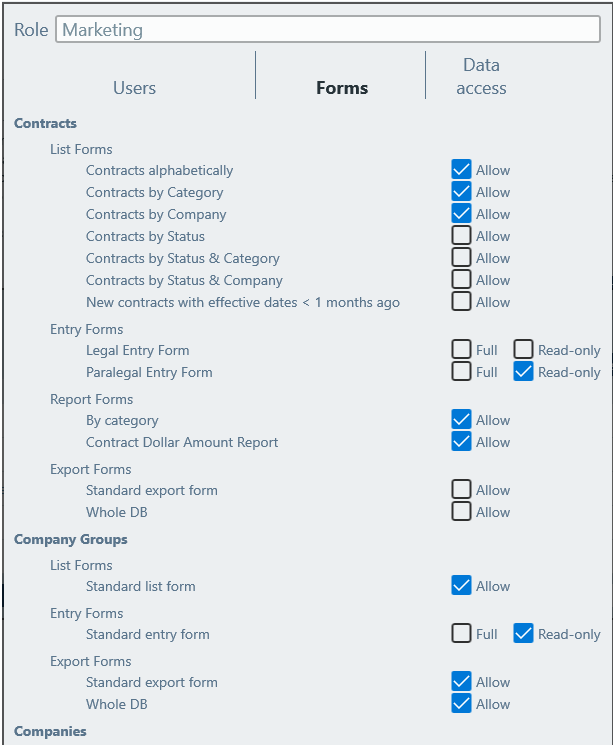Build No-Code Database Apps with RecordsManager
We are excited to announce availability of a new product in the Altova app development framework: RecordsManager.
Altova RecordsManager offers a completely visual, no-code interface for quickly creating custom database apps. RecordsManager is perfect for any app that handles data in records: think contract management, a customer database, an invoicing system, a database of local attractions or collections – the sky is the limit.
Your RecordsManager app will automatically be available on desktop devices as well as on mobile using native iOS and Android apps and provides tons of features that make it easy for end-users. Let’s see how it works.

Introducing Altova RecordsManager
Altova RecordsManager gives developers and systems administrators of all skill levels the ability to build custom business database solutions – with no coding or database development required.

Powerful features and shortcuts cut down on development time as you define and link the repositories, data containers, forms, fields, and filters that drive your app. It’s easy to add powerful data and business logic validation, granular search tools, reminders, reports and more.
That’s it – the rest of the work is done for you by RecordsManager behind the scenes.
Apps built in Altova RecordsManager are automatically optimized for desktop and mobile devices and include automatic responsive design for all layouts. When your app is ready, end users can access it on their computer using a browser or native Windows client. Mobile users will have access via native iPhone and Android apps. There’s even an offline mode for mobile users when Internet connectivity is spotty or unavailable.
How is RecordsManager Different?
While there are many tools available for building online databases and creating database apps, Altova RecordsManager provides some unique advantages:
- Build apps fast thanks to visual design interface:
- No code
- No backend database development required
- Your single design provides:
- Desktop access via native Windows client or web browser
- Native Android and iOS apps for mobile users
- Easy to use, flexible forms editor for displaying and entering data
- Configure structure of all components as needed – even after data is entered
- Built-in tools that make your app easy for end users
- Granular roles and permissions options for managing user access
Take a look at how it works in this video:
Visual, No Code App Development
Database apps created in RecordsManager are easy to build but can be sophisticated, with numerous database tables, lists, forms, and reports to meet a wide range of needs. Developers can customize the views and tables as well as the layout – all with zero manual coding required.
Let’s look at an example. To create a list form like the one below, you start out with picking the data fields you want to display. The layout of each list form is defined within a table, which you can structure according to how you want to display the records. Simply select the fields to show in the columns of the table (or add alternative content). You can easily add a second row for each record and display optional content, like a description in the second row. Then, adjust the width and styling of each column as desired.
In this example, a list form is created to display each department in the database along with its company and description in a table with columns sized automatically based on the content.
The resulting form will allow users to view and edit records.

Additional forms options include grouping sections into easy-to-navigate chunks, jump-to and search tools, and much more. Read all about the different forms you can create using RecordsManager.
Make Your Apps Easy for End Users
RecordsManager includes numerous built-in features that automatically make your apps easy to navigate, easy to use, and even a little fun.
Customizable display
Each app built in RecordsManager includes an image library and numerous color themes that end users can choose to customize their experience. Various color themes are shown in the screenshots throughout this article. Users may also customize the text size as desired.

Filters and search to zero-in on relevant data
RecordsManager apps include flexible filters that allow the system administrator to restrict the display of records based on any scenario, showing users relevant data based on the current context or even user permissions.

Built-in search tools can be customized to show pre-defined searches that help users find what they need quickly.
Data entry helpers
For data entry, it’s easy to provide pre-filled values such as dates and geolocation data, and the system administrator can define data validation rules and messages to help guide easy, efficient data entry. Helpful data entry features include:
- Validation of data values entered
- Validation of the format of data entered
- Editing hints
- Predefined form value options
- Option for pre-filled fields (e.g., date, auto-incremented ID number, etc.)
- Scripts that update other fields based on the current entry
- Ability to replicate update across multiple records
Data history, change tracking, and audit
Apps you build in RecordsManager provide built-in change tracking and audit tools to help users understand the history of a record, including which changes were made when, and by which user.
During data entry, it’s easy to review all changes before saving a record, and collision detection helps resolve conflicts when multiple users edit a record at once. Unlimited undo / redo functionality gives users more control over their data entry and quality control. Any possible errors can easily be reviewed and reversed.
Built-in reminders and alert groups
Custom database apps created in Altova RecordsManager include built-in functionality for reminding users about important dates and deadlines via reminders sent to alert groups.
An Alert Group defines a group of users who will receive reminder notification emails concerning a particular event. Any number of alert groups can be defined.
Offline use
Offline app use gives mobile users the option to continue to work with your app when an Internet connection is unstable or is altogether unavailable. The end user can continue to view existing records and even add new records during offline use. When an Internet connection is restored, the user has the option to save any newly added records or discard them.
Roles and Permissions
For enterprise database solutions, management of roles and permissions is of paramount importance. RecordsManager makes it easy for system admins with the same visual interface, which offers granular options for managing user access and configuring reminders and notifications based on user roles.
The admin can define any number of roles, each of which can have access to different forms, allowing for precise control over which records and fields users can access and/or edit.

This is just an overview of all the features available in Altova RecordsManager.
Try RecordsManager for Free
Altova RecordsManager is a free, pre-built MobileTogether solution that is available for you to start using when you install MobileTogether Designer. Download and install the free Altova MobileTogether Designer to get started on your first RecordsManager app.
